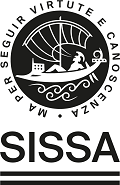Abstract
We present a study of a directional search for Dark Matter boosted forward when scattered by cosmic-ray nuclei, using a module of the NEWSdm experiment. The boosted Dark Matter flux at the edge of the Earth's atmosphere is expected to be pointing to the Galactic Center, with a flux 15 to 20 times larger than in the transverse direction.
The module of the NEWSdm experiment consists of a 10 kg stack of Nano Imaging Trackers, i.e. newly developed nuclear emulsions with AgBr crystal sizes down to a few tens of nanometers. The module is installed on an equatorial telescope. The relatively long recoil tracks induced by boosted Dark Matter, combined with the nanometric granularity of the emulsion, result in an extremely low background. This makes an installation at the INFN Gran Sasso laboratory, both on the surface and underground, viable. A comparison between the two locations is made. The angular distribution of nuclear recoils induced by boosted Dark Matter in the emulsion films at the surface laboratory is expected to show an excess with a factor of 3.5 in the direction of the Galactic Center. This excess allows for a Dark Matter search with directional sensitivity. The surface laboratory configuration prevents the deterioration of the signal in the rock overburden and it emerges as the most powerful approach for a directional observation of boosted Dark Matter with high sensitivity. We show that, with this approach, a 10 kg module of the NEWSdm experiment exposed for one year at the Gran Sasso surface laboratory can probe Dark Matter masses between 1 keV/c2 and 1 GeV/c2 and cross-section values down to 10-30 cm2 with a directional sensitive search.
Export citation and abstract BibTeX RIS

Published by IOP Publishing Ltd on behalf of Sissa Medialab. Original content from this work may be used under the terms of the Creative Commons Attribution 4.0 licence. Any further distribution of this work must maintain attribution to the author(s) and the title of the work, journal citation and DOI.
